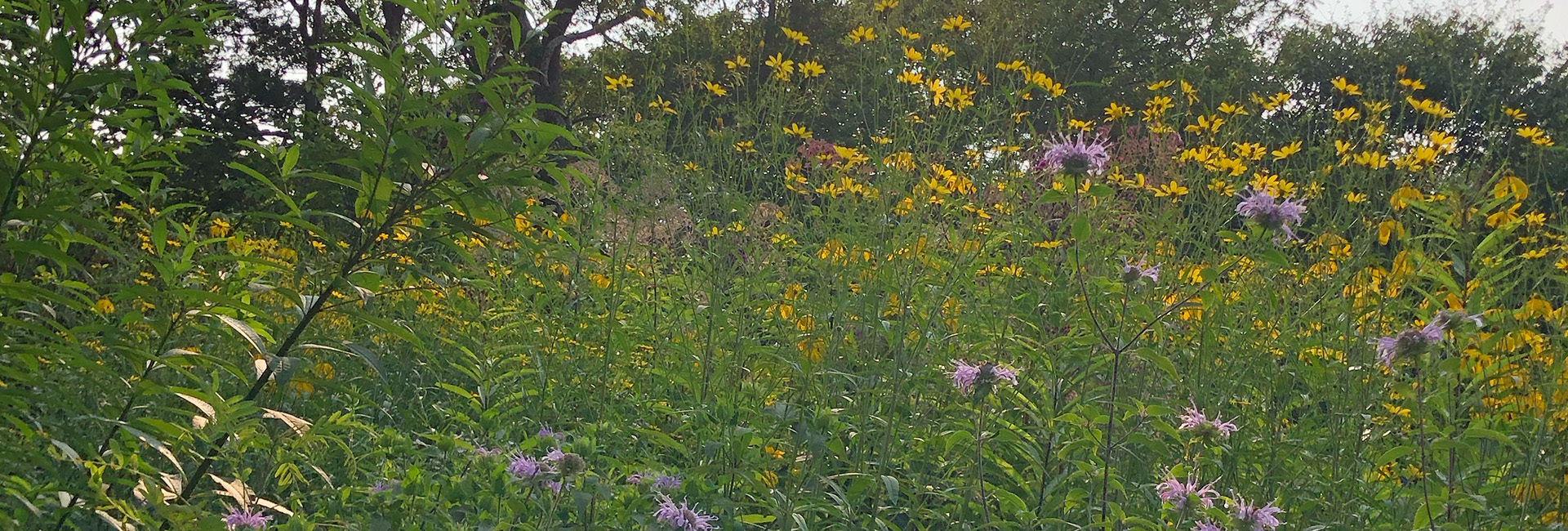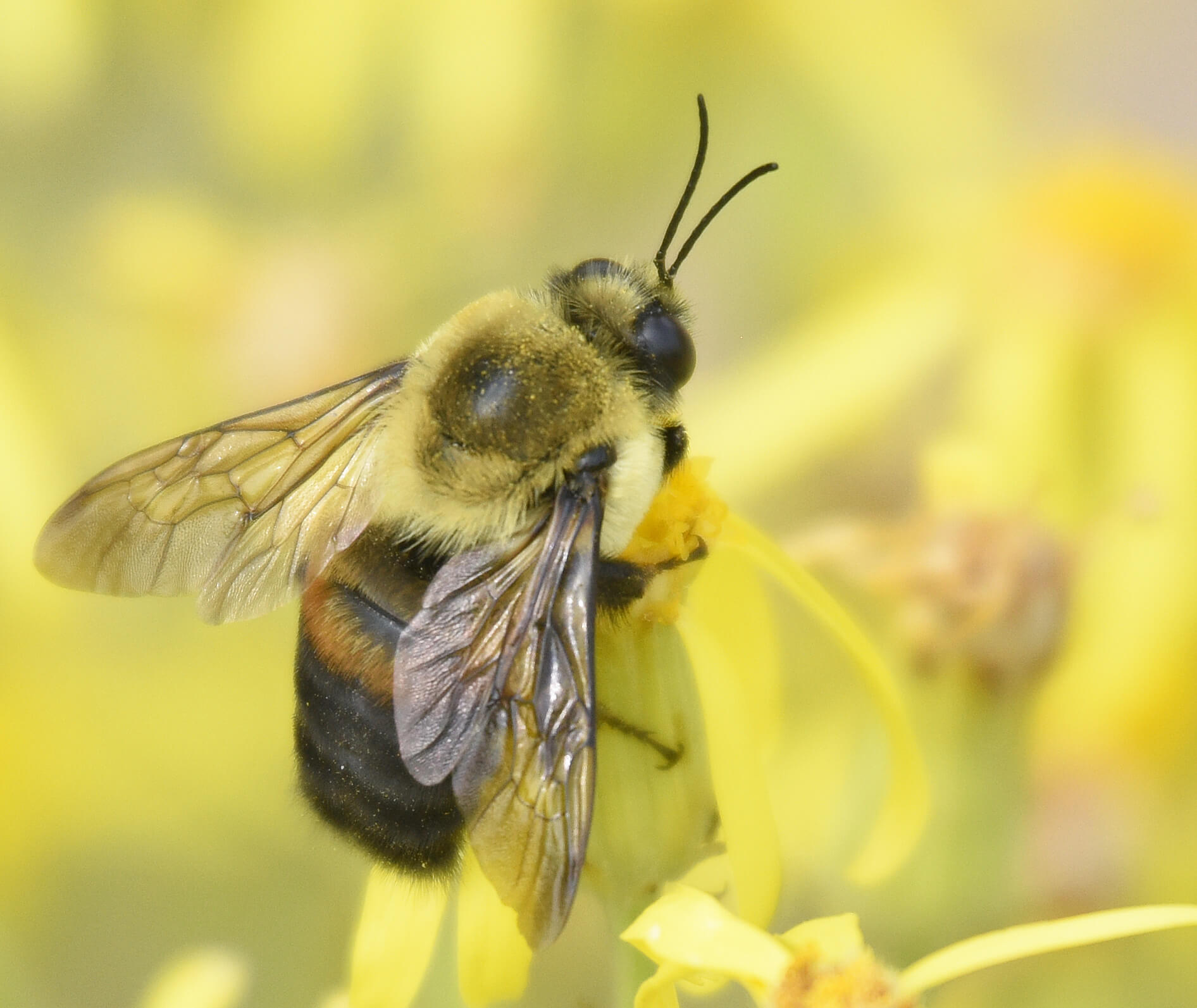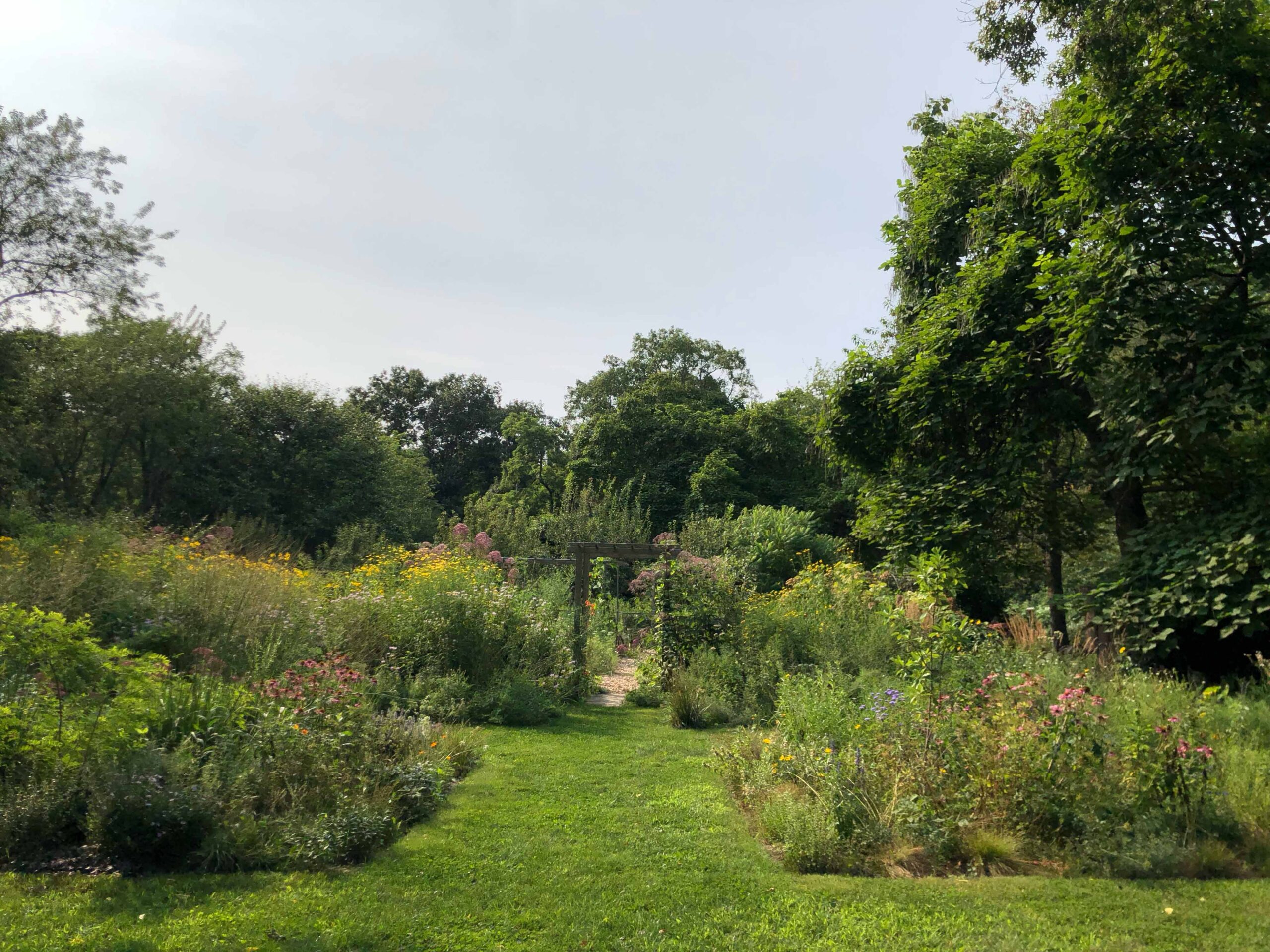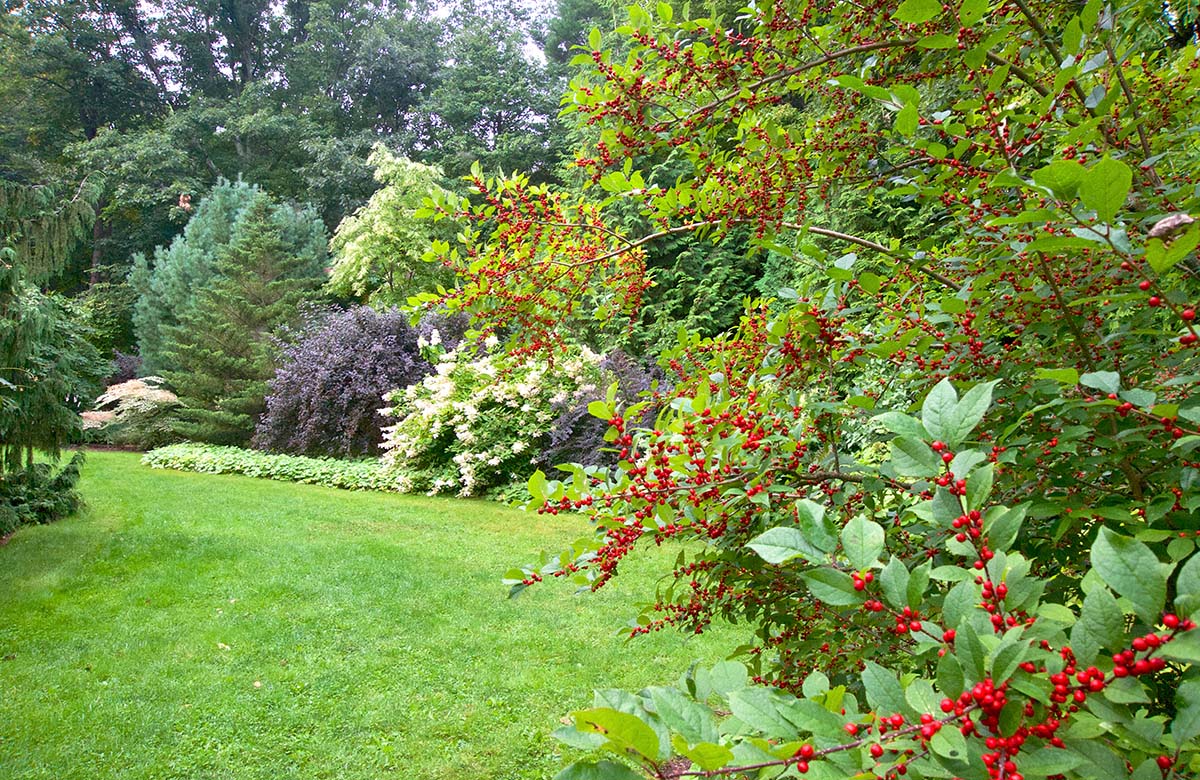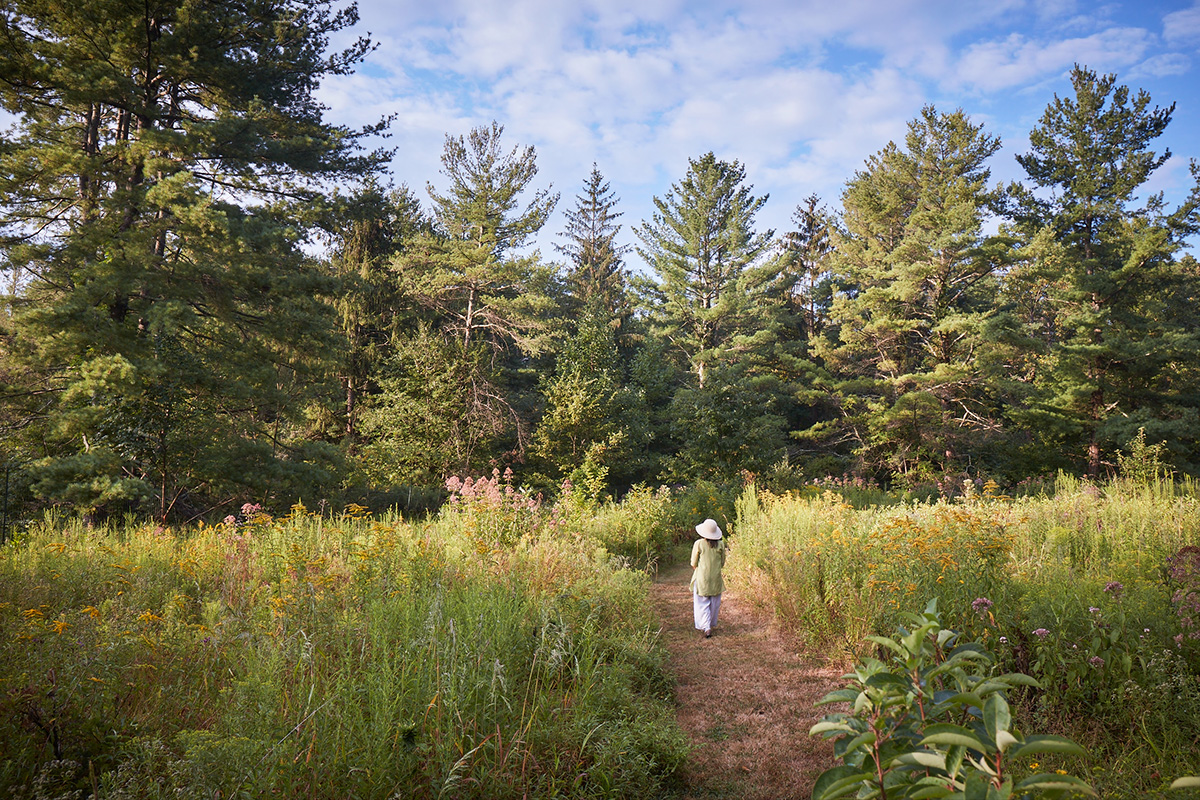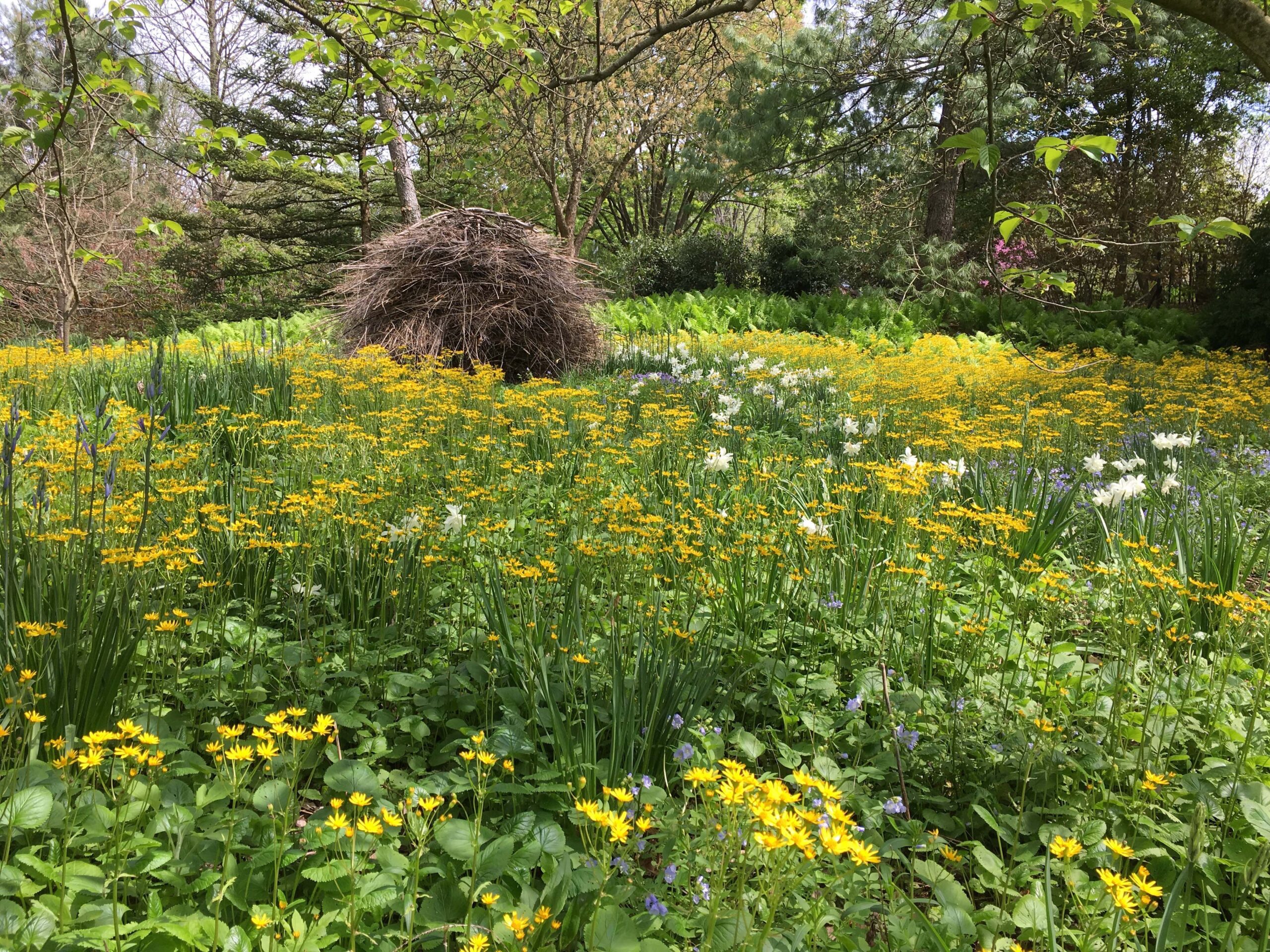
At Chanticleer, this habitat pile sits among spring-bloomers. “Today, the stacks are part of what I call a carbon positive approach to maintenance as no fossil fuels are used, ever, only gardener power,” says Chris Fehlhaber, who makes habitat piles every spring. Photo by Chris Fehlhaber.
This is part of a series with Gardenista, which ran on August 24, 2023.
With all the recent storms and severe weather happening, it feels like we’re besieged with debris from trees and shrubs. Instead hauling it to the landfill, where it will just add to methane pollution, make something beautiful and beneficial out of it. In fact, keeping garden debris, or biomass (organic matter like branches, stems, and leaves), on your property is one of the principles of nature-based gardening we introduced in last month’s column with Perfect Earth Project. Brush piles offer protection to birds, like wrens, thrushes, and warblers, and other wildlife, like amphibians, reptiles, and small mammals. Leaf litter becomes homes for insects. And when biomass decomposes, it feeds your soil—for free!
There are artful ways to display biomass in your garden. Take a cue from Edwina von Gal, founder of Perfect Earth Project, who constructs striking sculptures out of debris gathered from her yard on Eastern Long Island. She’s woven branches through tree trunks, built walls out of logs, and knitted sticks together to create large nests. “Tailor the style of your habitat pile to the style of your garden,” she says. If your garden is tightly managed, create something more deliberate, recommends von Gal. On the other hand, if you have a meadow or loosely planted beds, like von Gal has in her garden, you can be freer in your construction.
At Chanticleer garden in Wayne, PA, assistant horticulturist Chris Fehlhaber constructs a habitat pile each year after the meadow is cut back in early spring. (He waits as long as possible to cut back the meadow with a scythe to allow for overwintering insects to emerge.) To craft the stack, Fehlhaber drives a wood stake in the ground and builds around it so that it’s sturdy and strong. “I start by creating a level base and then work around the pole in either a clockwise or counter-clockwise rotation to ensure there is plenty of overlap for strength, stability, and balance,” he says. He continues the process until all the material is used. “Then, I gather woody debris from the previous year and ‘top’ the stack with it, arranging the branches on top to create a well-balanced dome, which helps weigh the top down and sit it neatly around the pole.”
“Songbirds, insects, toads, and snakes have all been observed utilizing the stacks for shelter,” says Fehlhaber. He’s spied goldfinches using them to feed on seedheads in the meadow during fall and winter and to hide from predators, like red-tailed hawks. “The coarse nature of the stacks means there are many niches for birds and wildlife,” he says.
Channel your inner Andy Goldsworthy or Maren Hassinger (see her inspiring exhibit at LongHouse Reserve, made from branches gathered on the property), and create art from nature. “Think of every fallen branch you find or invasive shrub you cut down, as a new opportunity,” says von Gal. “Be creative and have fun.”
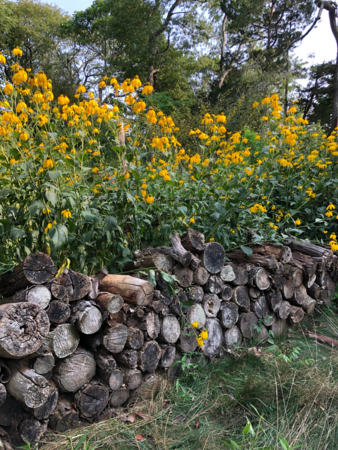
Stack logs from fallen or diseased trees you removed to create walls or screens in your garden. They also provide habitat for native bees, chipmunks, and snakes. “Yes, you really do need snakes,” says von Gal. “They eat voles and other small critters, like white-footed mice, a primary vector of Lyme disease.” Here, a border of cutleaf coneflower (Rudbeckia laciniata) thrives behind the wall.
Instead of discarding the branches of non-native California privet (Ligustrum ovalifolium) she removed, von Gal wove them into the trunks of native Eastern red cedar trees (Juniperus virginiana).
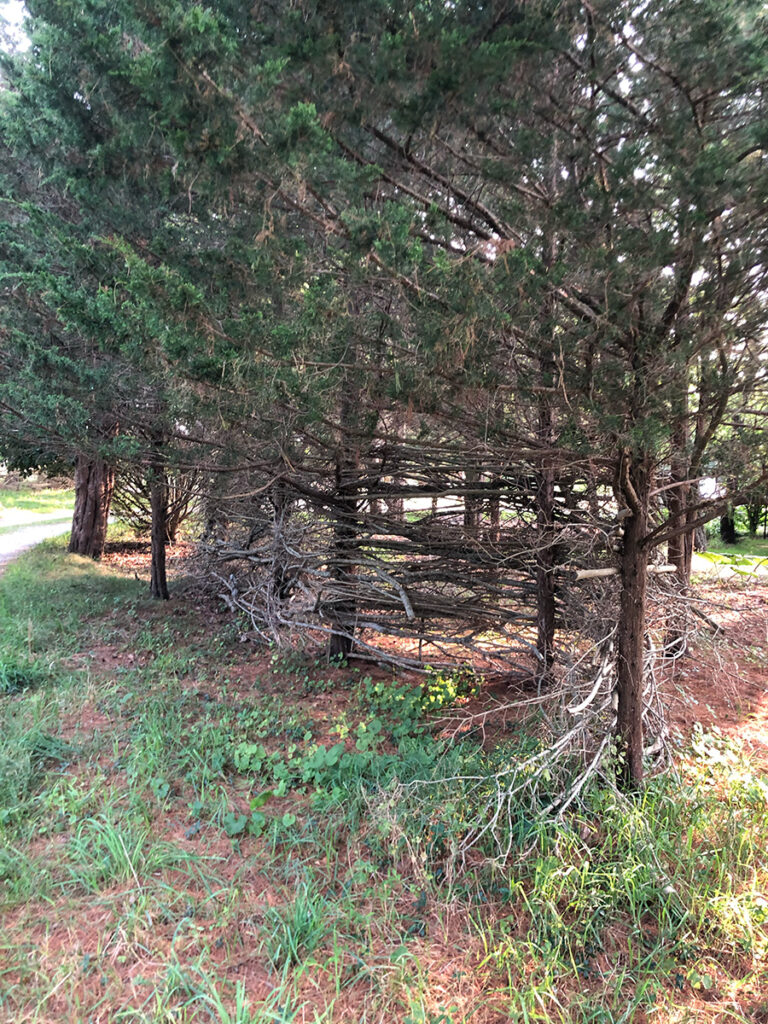
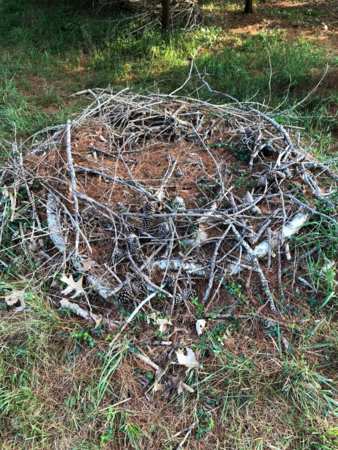
This beautiful nest of pinecones, needles, and branches will breakdown over time, feeding the soil.
Several years ago when I was at Chanticleer, the dreamy garden in Wayne, PA, I fell for this simple habitat pile tucked away in the meadow. Chris Fehlhaber builds each stack around a center post. As the stack settles, gaps form around the post. “Bumblebees use this gap to gain access to the interior of the stack, which is likely relatively well-sheltered and dry, to make their nests,” he says.

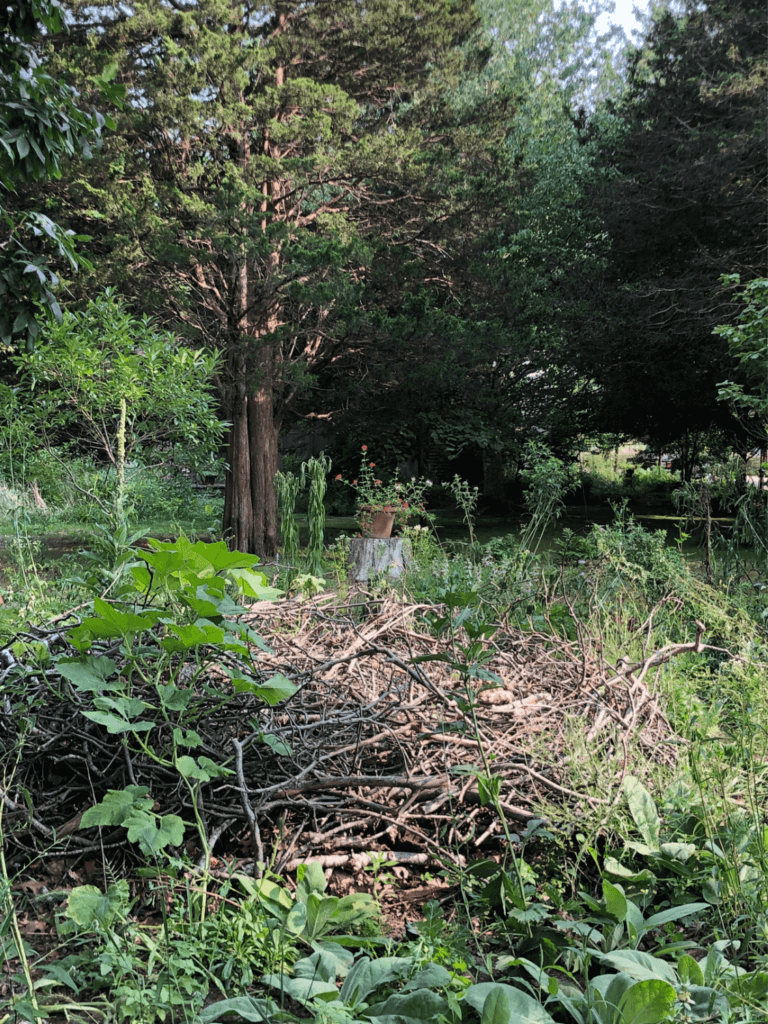
Edwina von Gal doesn’t throw away anything from her garden. Clippings go into compost and any branches that fall or break from storms get turned into habitat piles that are embedded throughout her property on Eastern Long Island. She and her team love the process of knitting branches together to build this nest. “It’s meditative,” she says.
In winter, Chanticleer’s graphic habitat stacks become snow-covered sculpture

